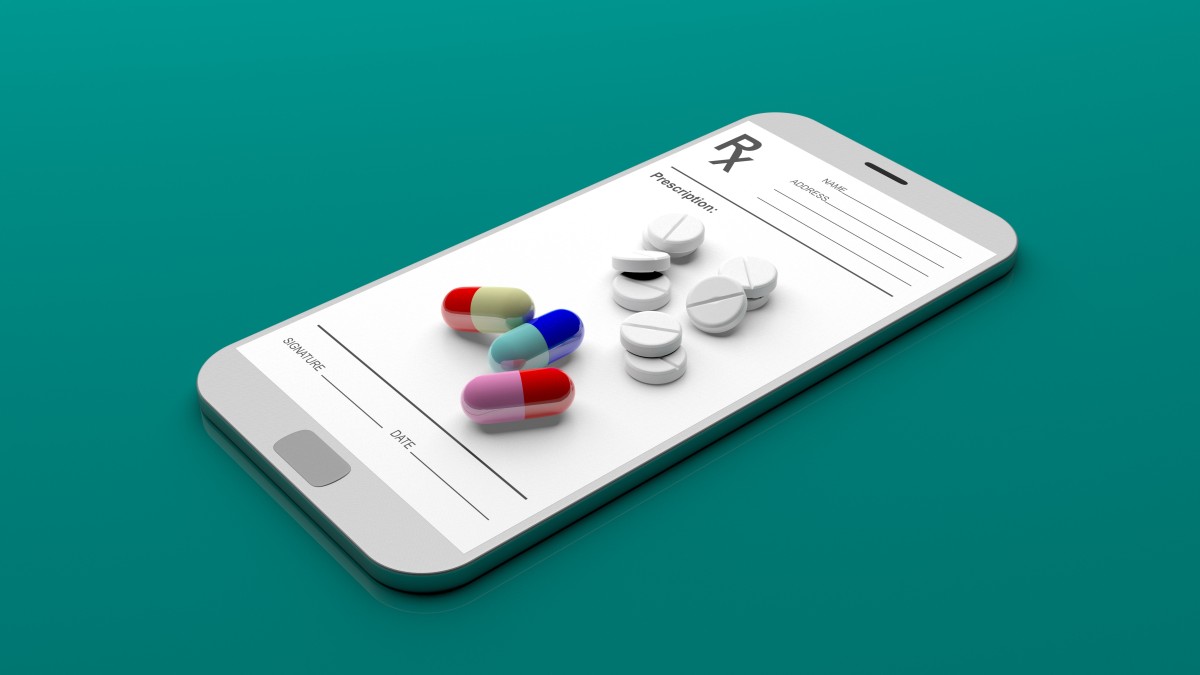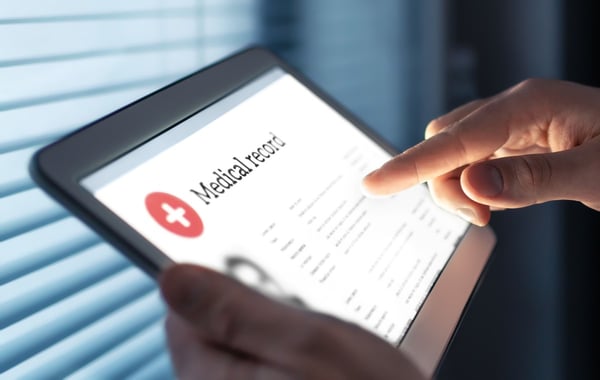Using Patient Education Videos to Support Preventive Care Strategies
As a healthcare provider, you know prevention saves lives. From routine screenings and lifestyle counseling to vaccinations and early detection,...
5 min read
Robert McDermott Jan 18, 2024 12:30:00 PM
 As healthcare providers, you’re juggling a lot of responsibilities and priorities. Any tool available to you should not only be helping you meet your practice needs but also helping you achieve patient-focused objectives like improving safety, care, and outcomes. As healthcare, in some cases more slowly than other industries, moves toward digital software applications and tools should be streamlining workflows to deliver on other objectives; ultimately, they provide for both the human and business-focused sides of your practice.
As healthcare providers, you’re juggling a lot of responsibilities and priorities. Any tool available to you should not only be helping you meet your practice needs but also helping you achieve patient-focused objectives like improving safety, care, and outcomes. As healthcare, in some cases more slowly than other industries, moves toward digital software applications and tools should be streamlining workflows to deliver on other objectives; ultimately, they provide for both the human and business-focused sides of your practice.
In no situation is this more true than the marrying of Electronic Prescribing for Controlled Substances (EPCS) and Prescription Drug Monitoring Programs (PDMPs). When these two powerful tools are properly integrated, not just with each other but also with your EHR and existing practice management software, you have an incredibly powerful tool to help you meet patient care and practice safety goals.
Quick Links
We all know healthcare tosses around a lot of “acronyms,” but when it comes to controlled substances, electronic prescribing and prescription drug monitoring programs are two crucial components. Each of these play pivotal roles in enhancing patient care and safety, which, while related, serve unique purposes.
EPCS refers to the electronic transmission of prescriptions for controlled substances directly and securely to the pharmacy. Designed in part to streamline and digitize the prescribing process, the primary goal of EPCS is to reduce instances of prescription fraud, improve accuracy in medication dispensing, and enhance patient safety by minimizing errors associated with traditional paper prescriptions.
To help support those goals, PDMPs provide a comprehensive overview of a patient's prescription history. These databases help prescribers and pharmacists collect, monitor, and analyze prescription data with the end goal of enabling informed decisions. Further, they may help identify potential substance abuse issues and prevent "doctor shopping”.
As noted, both EPCS and PDMPs contribute significantly to the reduction of prescription-related issues; however, it's important to recognize their distinctions. EPCS focuses on the electronic transmission of controlled substance prescriptions, completing the digital handoff from HCP to the pharmacy. PDMPs, on the other hand, aggregate prescription data to provide HCPs and pharmacists with medication histories and help them spot potential red flags related to controlled substances.
 The Rise in Mandates for EPCS
The Rise in Mandates for EPCSAs a healthcare provider or practice manager, staying on top of ever-evolving mandates and regulatory concerns can be a challenge. Still, you’re likely aware of the rise in EPCS mandates nationwide. For many providers, that awareness preceded the January 1, 2023 mandate from the federal government that all Medicare Advantage and Part D prescriptions must be transmitted electronically.
That was the first step in a larger shift towards digitization for many providers, however state-level EPCS mandates, which are becoming more popular in the last 5 years, are designed to ensure the secure and electronic transmission of prescriptions for controlled substances.
Currently, 37 states require EPCS. Still, if you’re in a state with EPCS, the mandate may have qualifiers and more. For example, some states, like Minnesota, require EPCS for pain clinics only. Other states require EPCS only for Schedule II-IV only because the likelihood of misuse for Schedule V drugs is low.
While state laws vary at this time, and some states are still lagging in the adoption of EPCS, the benefits, especially when it comes to reducing abuse of controlled substances, are well documented. It should, for that reason, come as no surprise that a federal bill has been introduced which would require EPCS under any group or individual health coverage including employer-provided health plans.
Given their shared patient safety and prescription accuracy goals, ensuring EPCS and PDMPs work in conjunction with one another is essential. How useful are electronic prescriptions at decreasing prescription abuse if there’s no way of tracking and monitoring those prescriptions? This is how PDMP and EPCS can, and should, work together.
The synergy between PDMPs and EPCS is evident in their collective impact on patient safety. By integrating these systems, healthcare providers gain a comprehensive view of a patient's prescription history while having a secure and efficient means to prescribe controlled substances electronically. This dual approach not only curtails the potential for abuse but also ensures that patients receive the necessary medications in a timely and accurate manner.
A few valuable statistics regarding this EPCS-PDMP partnership:
In short, when it comes to improving patient care, outcomes and safety, even without legal mandates, this tech partnership is proving valuable. Not only does it align with practice demands but it also works with broader efforts to leverage technology while incorporating data-driven decision-making.
While PDMPs can be a boon to prescribers, that doesn’t mean they’re without challenges. In fact, for many prescribers these roadblocks have, undoubtedly, impacted utilization.
In fact, you may be familiar with some of the following challenges:
1. Limited interoperability/integration. PDMPs may not be fully integrated or interoperable with existing practice management software, ePrescribing applications or EHRs. The lack of integration can lead to inefficiencies.
2. Varied state regulations. As noted above, PDMP regulations vary from state to state, making adherence difficult for prescribers, especially those who may operate across state borders, like a DSO.
Navigating these challenges requires ongoing efforts to improve PDMP functionality, promote standardized regulations and provide adequate training and support for teams that may be using the database.
 How Integrating PDMP and EHR Improves the EPCS Process
How Integrating PDMP and EHR Improves the EPCS ProcessThankfully, one way to mitigate some of the challenges is through integrating all of your software. More specifically, PDMPs integrated with EPCS solutions that work with existing practice management software and EHRs can not only save you valuable time but can also improve the process and, as a result, the outcomes.
To start, the integration of PDMP and EPCS with your EHR is a pivotal step towards creating a safer prescribing environment. By intertwining this valuable data with EPCS, healthcare professionals can make more informed decisions at the point of care, ensuring patient safety and preventing the misuse of controlled substances.
And, with the integration, there’s no extra step. As you’ve likely seen elsewhere in your practice, integrated software streamlines your workflow and, in this case, the entire prescription process. The ability to access patient records seamlessly translates to informed decisions based on a patient's medical history, allergies and current medications. Then, necessary prescriptions can be generated and transmitted electronically, eliminating the need for paper-based processes and reducing the risk of errors associated with manual data entry.
Finally, if regulatory changes and mandates have you overwhelmed, an integrated PDMP can help your practice comply with these mandates. When you have PDMP integration into your software, changes and updates are reflected immediately, ensuring you’re as up-to-date as the most recent changes.
The bottom line is that, as you’ve likely experienced with other tech tools, software integration is essential when it comes to efficiency and accuracy. Working with solution providers who understand how important those interactions are for every goal, across your entire practice or organization, is essential.
It’s with that priority in mind that iCoreConnect built out its suite of solutions, including iCoreRX which includes not only cloud-based electronic prescribing, but also integration with both your state PDMP and your existing practice management softwares. If you’re ready to talk about how this solution can improve your practice and patient care, reach out to our team today or book a demo and see it in action!

As a healthcare provider, you know prevention saves lives. From routine screenings and lifestyle counseling to vaccinations and early detection,...

There’s no denying that the AI boom is here. The American Medical Association reports that 66% of physicians are currently using artificial...

If only managing your practice’s revenue cycle came with a crystal ball. You could spot claim denials before they happen, predict when patients might...

In much the same way as licensing procedures are different state by state and require adherence to their specific laws, the same holds true for...

These days, your smart fridge can order your groceries without reading the list you wrote on the kitchen counter, so why are healthcare providers...

While many Americans know how essential dental care is to their overall health, nearly 40 million avoid the dentist. One way dentists and dental...